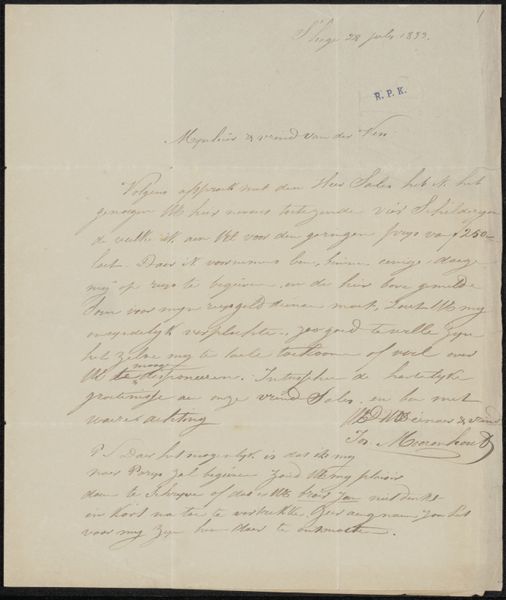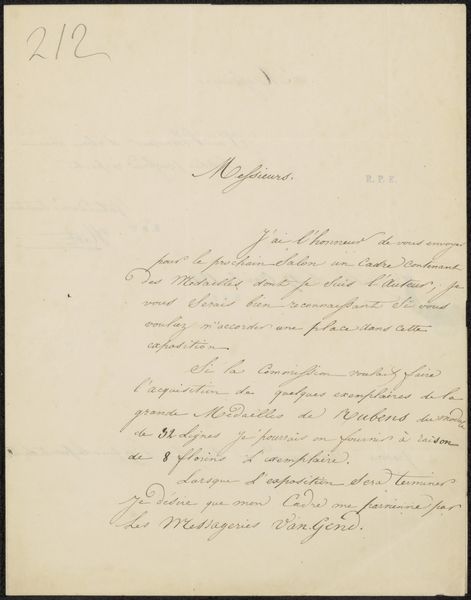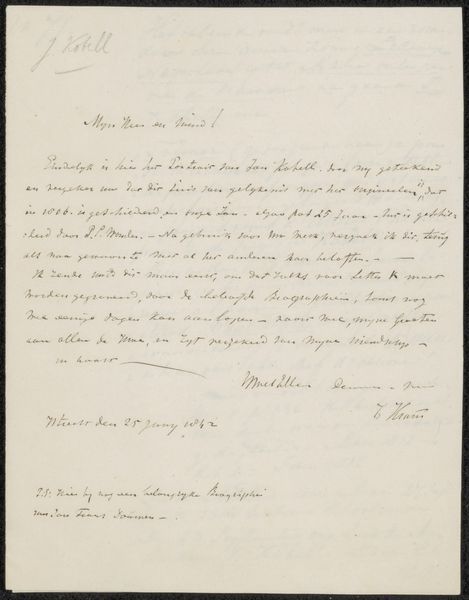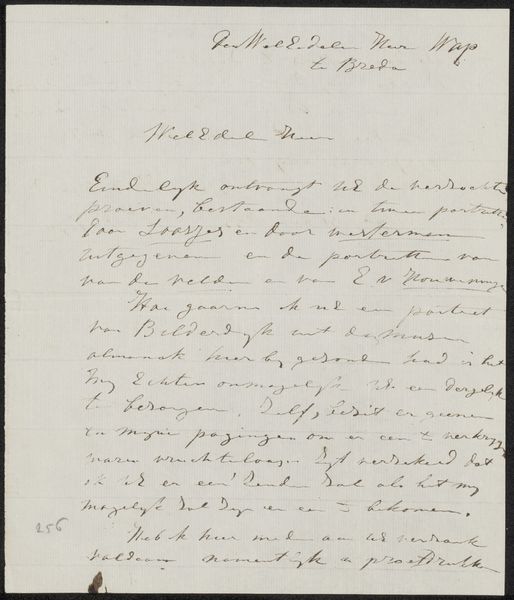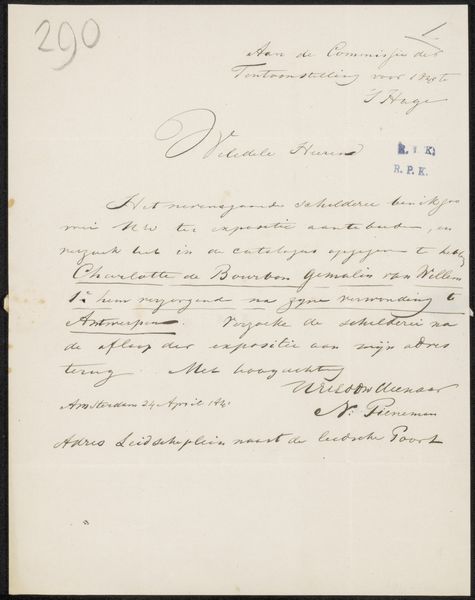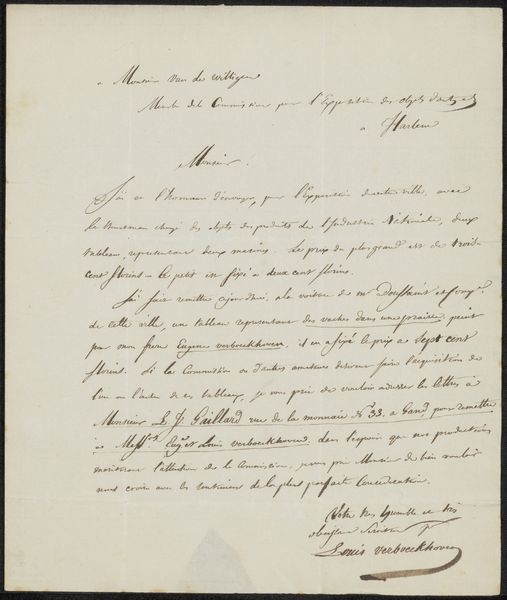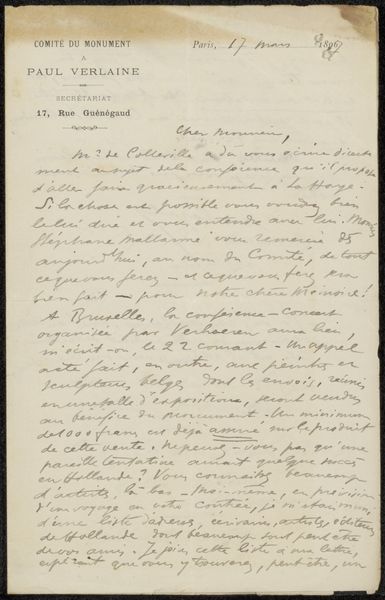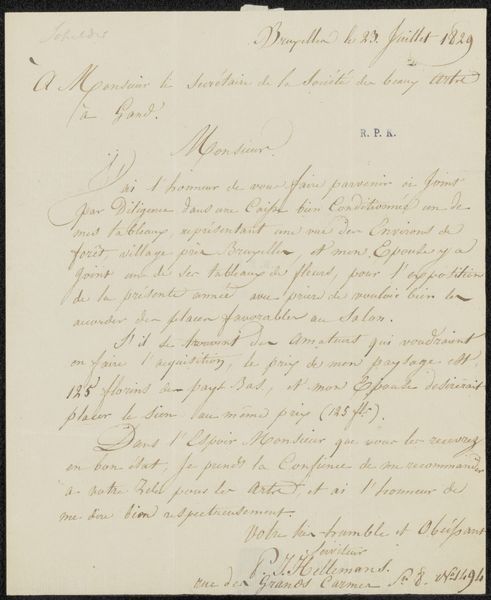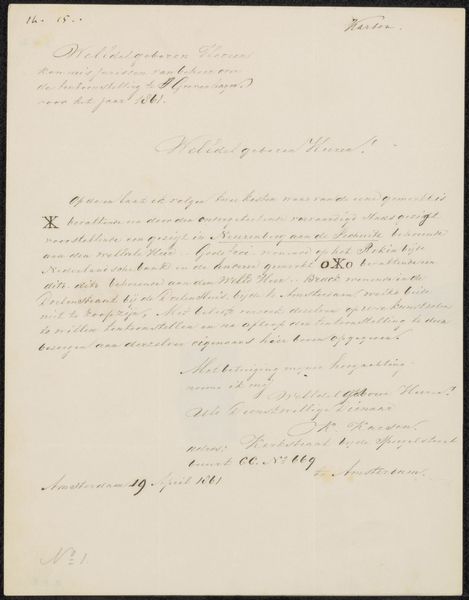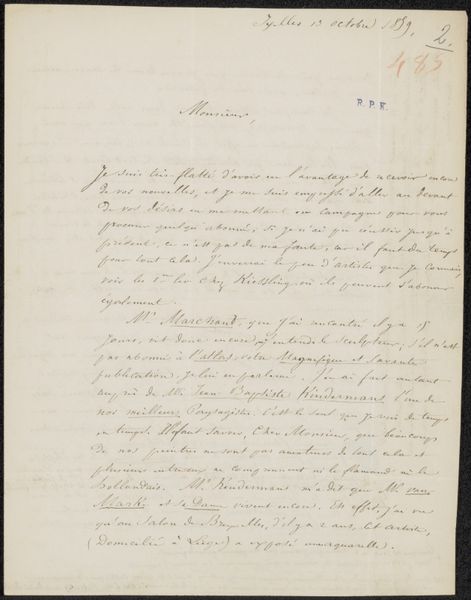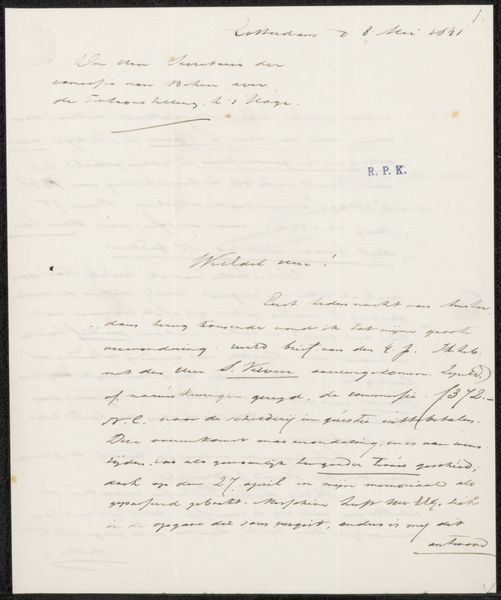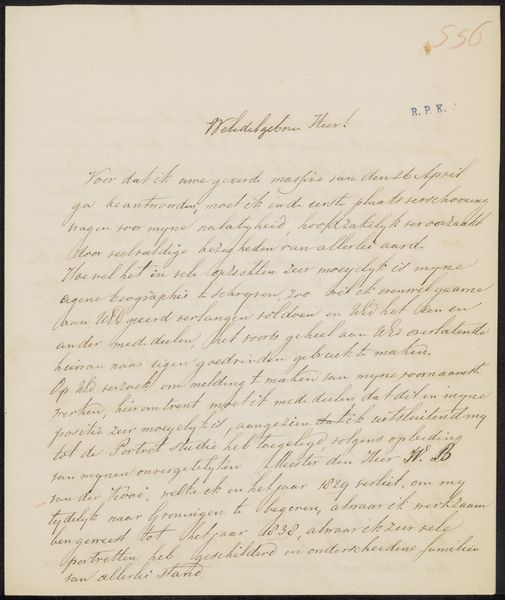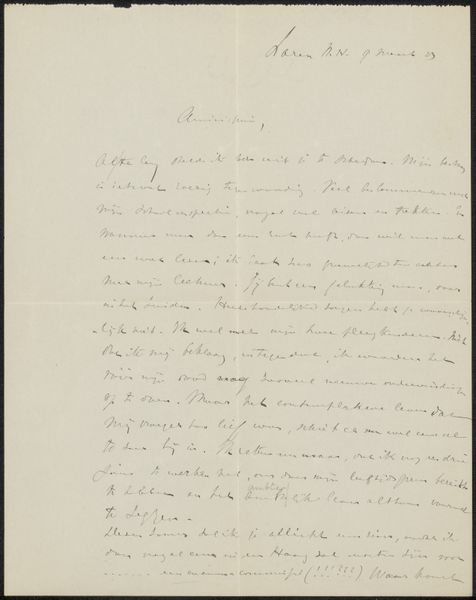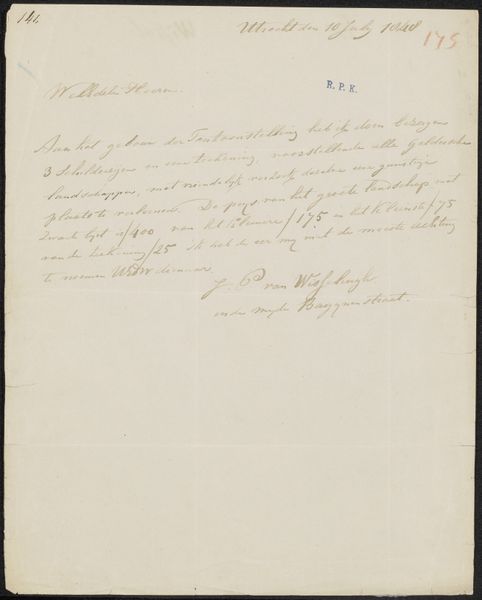
drawing, paper, ink, pen
#
drawing
#
hand drawn type
#
paper
#
personal sketchbook
#
ink
#
romanticism
#
pen
#
calligraphy
Copyright: Rijks Museum: Open Domain
Curator: We’re looking at “Brief aan anoniem,” or “Letter to Anonymous,” potentially from 1848, crafted by C.L. Winkelaar. The piece features pen and ink on paper, showcasing beautiful calligraphy. Editor: My first impression is one of faded elegance. The handwritten script, though dense, has a delicate flow. It feels like uncovering a secret. Curator: This work offers a window into 19th-century social dynamics, particularly concerning anonymous communication. Who was Winkelaar writing to, and what societal constraints necessitated the anonymity? The romantic style suggests emotional intensity. Editor: I see the appeal in its historical context. But let's not overlook the artistic merit. Look at the meticulous line work! The artist varies pressure to create light and shadow, giving depth to what could easily be a flat surface. There’s a visual rhythm established by the ascenders and descenders. Curator: Exactly! The act of writing itself becomes a performance, a testament to literacy and perhaps even dissent, given the need for anonymity. The personal sketchbook element indicated by some suggests a private sphere of thought and expression. Editor: And consider the paper itself. The aging process adds another layer. Those foxing spots, for instance, create an accidental texture that is both beautiful and destructive. It highlights the ephemerality of the message and, by extension, time. Curator: We can interpret the “anoniem” as representing marginalized voices, the voiceless in a time of great social upheaval, using art as protest against authoritarianism in some fashion, an early act of resistance preserved on paper. Editor: For me, it’s also the mastery of penmanship elevating a simple document into art. This combination of artistic and literal inscription allows an enduring appreciation that transcends simple historical understanding. Curator: Seeing art within historical struggles emphasizes not just aesthetics, but power relationships expressed through everyday life, which enriches understanding even if there is a mysterious anonymous aspect that can never be fully known. Editor: True, true...Ultimately, its power lies in its beautiful execution and the tangible feeling it conveys regardless of knowing what exactly Winkelaar was on about!
Comments
No comments
Be the first to comment and join the conversation on the ultimate creative platform.
